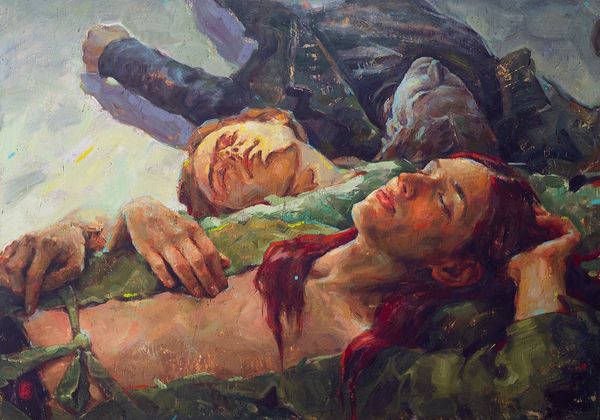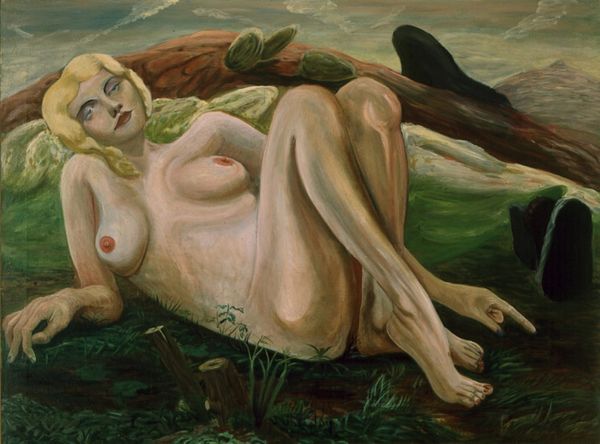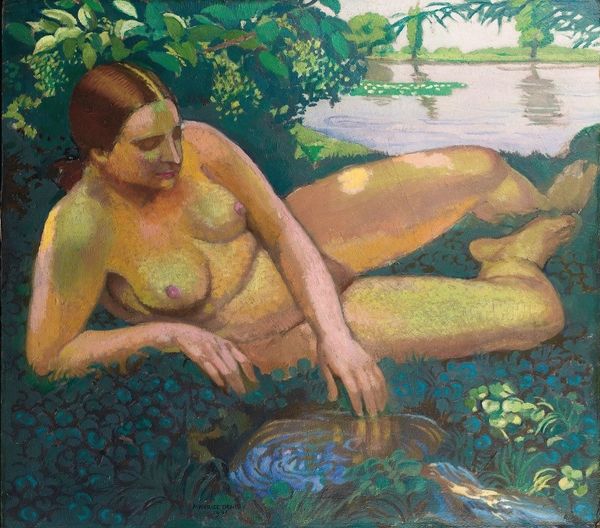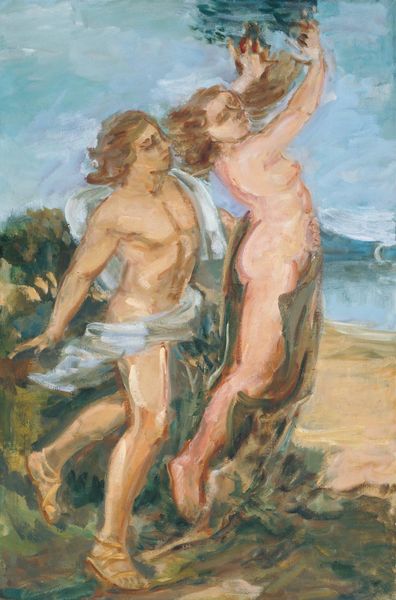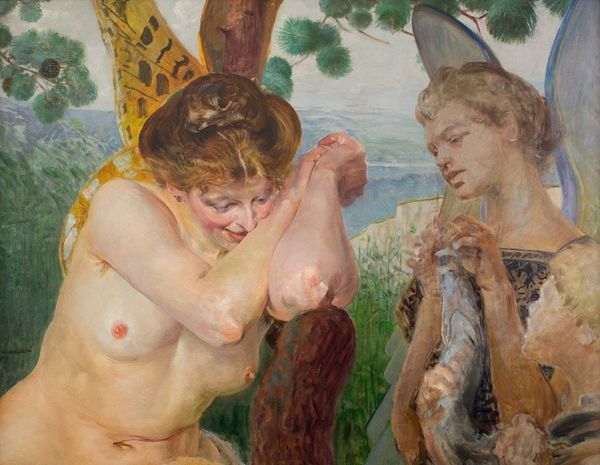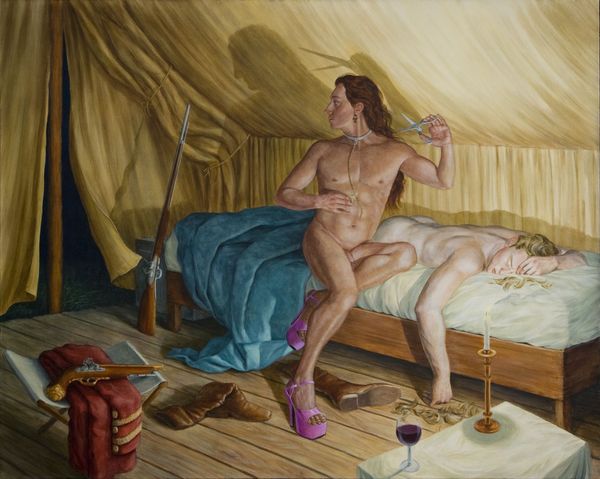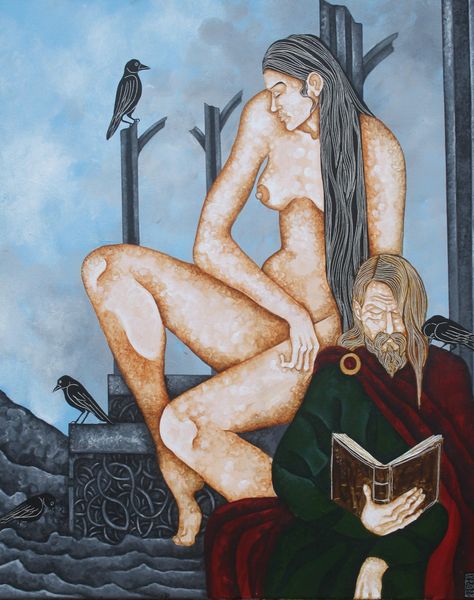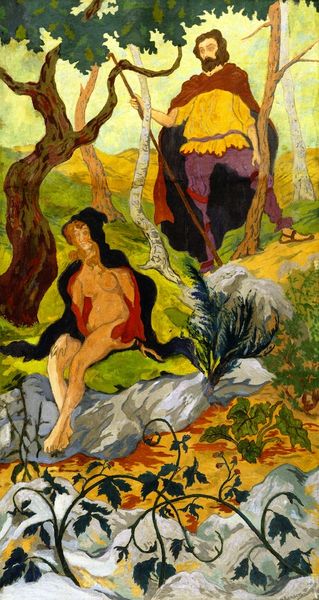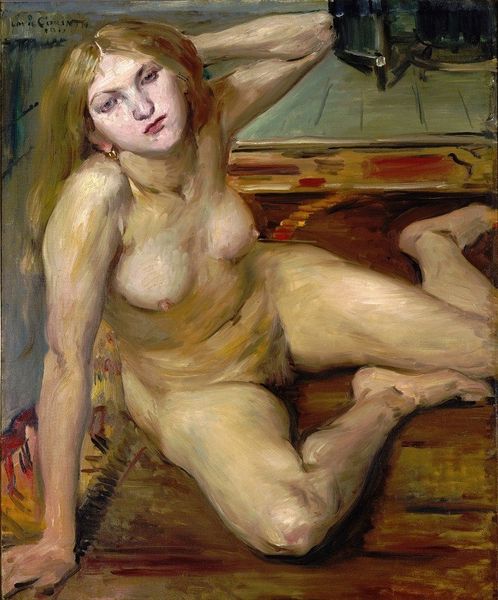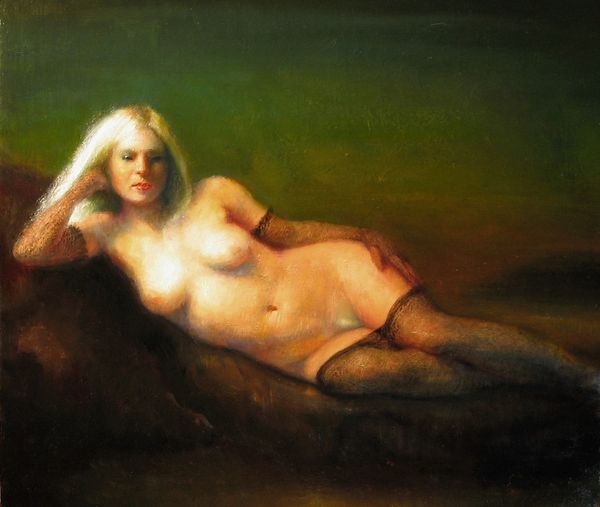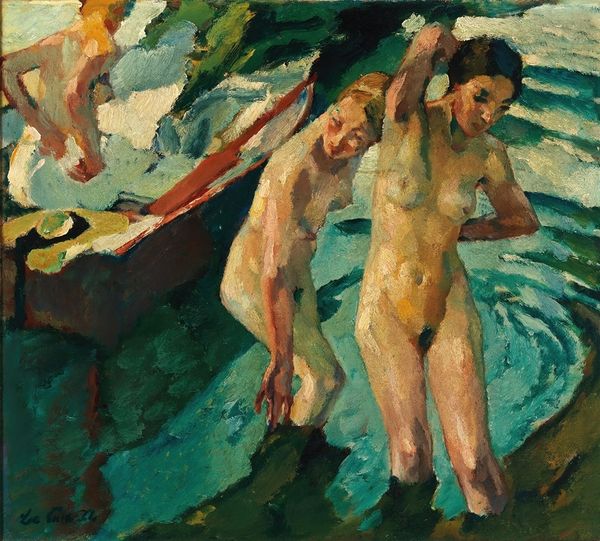
Copyright: Public Domain: Artvee
Curator: Let's discuss Magnus Enckell’s oil painting "Adam and Eve," created in 1897. The canvas portrays the iconic biblical figures in a moment of contemplation. Editor: It’s quite melancholic, isn't it? Not what one expects from the dawn of humanity. There’s a stillness, almost a resignation, in their eyes. The way they're posed, close but not touching, hints at a coming separation or awareness. Curator: Interesting observation! Focusing on the material aspects, we see Enckell employed visible brushstrokes, building up layers of paint to give texture and depth. Consider the socioeconomic context: Symbolism was emerging as a challenge to academic painting and its traditional means of production and distribution. Enckell's adoption of visible brushwork, while reflecting contemporary trends, signaled a rejection of illusionism and a focus on the materiality of the paint itself. Editor: Yes, the visible brushwork adds to the dreamlike quality. The light seems muted, filtered. Looking at the symbolic weight here, the averted gazes contribute to the atmosphere. Traditional depictions often show a moment of realization, or shame, right after eating the forbidden fruit, yet here that crucial moment is bypassed for one that speaks more to anticipation and foreboding of its consequences. The choice feels deliberate. Curator: Precisely, and the subdued color palette – predominantly earth tones with soft greens – speaks volumes about Enckell’s working method and aesthetic preferences. Considering that other symbolist painters favored richer, darker palettes for dramatic effect, his artistic choice of those "earthy" materials could mirror themes of humanity, and of being cast out into working on it. Editor: In a symbolic interpretation, notice also that their bodies seem strangely androgynous. It almost collapses traditional gender roles onto the primordial human form, which, together with their placement within an evocative, but ambiguous natural landscape, really heightens a sense of humanity existing at the threshold between innocence and knowledge. Curator: Indeed, by subtly blending those traditional gendered signifiers into these nude figures, and through an apparent artlessness achieved through very purposeful material interventions in its rendering, the artwork offers a novel commentary on creation and labor. Editor: Yes, it gives you a feeling of inevitable change. So, looking at Enckell's use of biblical themes here allows an intimate exploration into not just the relationship between faith and representation, but humanity's evolving understanding of innocence, loss, and the labor inherent in existence. Curator: It makes you consider Enckell's creative intentions within a rich web of material and symbolic dialogues. Editor: I think I see "Adam and Eve" with completely new eyes.
Comments
No comments
Be the first to comment and join the conversation on the ultimate creative platform.
